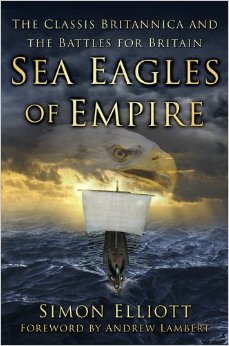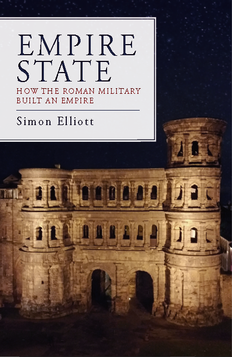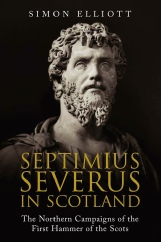Interview with Dr Simon Elliott
This time round I managed to pin down Dr Simon Elliott, who is best know for his work on the Roman military as well as work on Roman London and how the stone used came from the Medway. Which is where we used to live. In fact, we used to walk around the Battle of Medway site a lot too. Anyways I digress…
Tell us a little about yourself.
I am an award winning and best selling historian (seven books published to date, three more out this year, all the first hits under my name on Amazon), archaeologist, broadcaster, Honorary Research Fellow at the University of Kent, Trustee of the Council for British Archaeology, Ambassador for Museum of London Archaeology and Guide Lecturer for Andante Travels. I am also a PR Week Award winning communications practitioner and was previously an award-winning journalist.
What made you focus on the period of history you have written about?
I have always had a passion for ancient and military history but actually fell back in love with academia in my 40s when I decided to do an MA in War Studies at KCl, this then sequeing into an MA in Archaeology at UCL and finally a PhD in Classic and Archaeology from the University of Kent. Graduating in 2017, the thesis of my doctorate identified the exact five ragstone quarries in the upper Medway Valley where the stone was extracted to build Roman London and the built environment in the South East during the Roman occupation of Britain. This included identifying the Classis Britannica regional fleet here as the organisation which ran the industry for the Empire, as the regional fleets did elsewhere in the Empire.
Where do you do most of your writing?
Always at home, as now, on the Mac in my office!!! I also always travel the breadth of the Empire mind to take images for all of my books.
Share one strange fact you found while researching your work?
That the famous gladius hispaniensis Roman legionary sword had no runnels to allow air into a wound, so to remove the sword quickly you had to give it a massive twist, leaving a gaping wound that shocked their opponents. True psychological warfare!
While your first book was about the Roman navy, did you find any evidence of specialist naval troops or weaponry? Were there Roman marines?
There were certainly Roman marines on all of their warships, they being very similar to their land based counterparts. In times of trouble they were often recruited into the legions themselves, sometimes en masse as an entire new legion.
What are you working on next?
Currently writing Roman Conquests: Britannia for Pen & Sword. I have Old Testament Warriors out on May 20th, then in September Romans at War and Pertinax: The Son of a Slave Who Became Roman Emperor. Then early next year I have Britain’s Lost Legion: What Really Became of legio IX Hispania.
Where can people find about more about your work? Are you active on social media, publish your own website for example?
You can find all of my books on the usual websites, while my own website address is http://simonelliott.net/ , and I am very active of social media where I post all of my publishing, broadcasting and research news. Do follow me on Twitter at @SimonElliott20
Books
Sea Eagles of Empire: The Classis Britannica and the Battles for Britain
Sea Eagles of Empire: The Classis Britannica and the Battles for Britain, it tells the story of the Roman Navy in Britain.
The Roman War Machine comprised land and naval forces, and although the former has been studied extensively, less has been written and understood about the naval forces of the Roman Empire and, in particular, the regional navies which actively participated in most military operations and policed the seas and rivers of the Empire. Until the mid-3rd century, in a British context, this navy was the Classis Britannica – a strong fighting force in its own right. Its composition, ship types, roles, tactics and technology have never been studied at length.
Here I tell the story of this illustrious naval force in their metal-beaked galleys and their exploits defeating the enemies of the Emperor, keeping the peace around the British isles.
Empire State
The armed forces of Rome, particularly those of the later Republic and Principate, are rightly regarded as some of the finest military formations ever to engage in warfare. Less well known however is their use by the State as tools for such non-military activities in political, economic and social contexts. In this capacity they were central instruments for the Emperor to ensure the smooth running of the Empire.
In this book the use of the military for such non-conflict related duties is considered in detail for the first time. The first, and best known, is running the great construction projects of the Empire in their capacity as engineers. Next, the role of the Roman military in the running of industry across the Roman Empire is examined, particularly the mining and quarrying industries but also others. They also took part in agriculture, administered and policed the Empire, provided a firefighting resource and organised games in the arena.
The soldiers of Rome really were the foundations on which the Roman Empire was constructed: they literally built an empire. Simon Elliott lifts the lid on this less well-known side to the Roman army, in an accessible narrative designed for a wide readership.
Septimius Severus campaigns in Scotland
Since 1975 much new archaeological evidence has come to light to illuminate the immense undertaking of Septimius Severus campaigns in Scotland, allowing for the first time the true story of this savage invasion to be told. In the early 3rd century Severus, the ageing Roman emperor, launched an immense shock and awe assault on Scotland that was so savage it resulted in eighty years of peace on Rome s most troublesome border.
The book shows how his force of 50,000 troops, supported by the fleet, hacked their way through the Maeatae around the former Antonine Wall and then pressed on into Caledonian territory up to the Moray Firth. Severus was the first of the great reforming emperors of the Roman military, and his reforms are explained in the context of how he concentrated power around the imperial throne. There is also an in-depth look at the political, economic and social developments that occurred in the Province. This book is aimed at all who have an interest in both military and Roman history. It will particularly appeal to those who are keen to learn more about the narrative of Rome’s military presence in Britain, and especially the great campaigns of which Severus assault on Scotland is the best example.
< BACK

